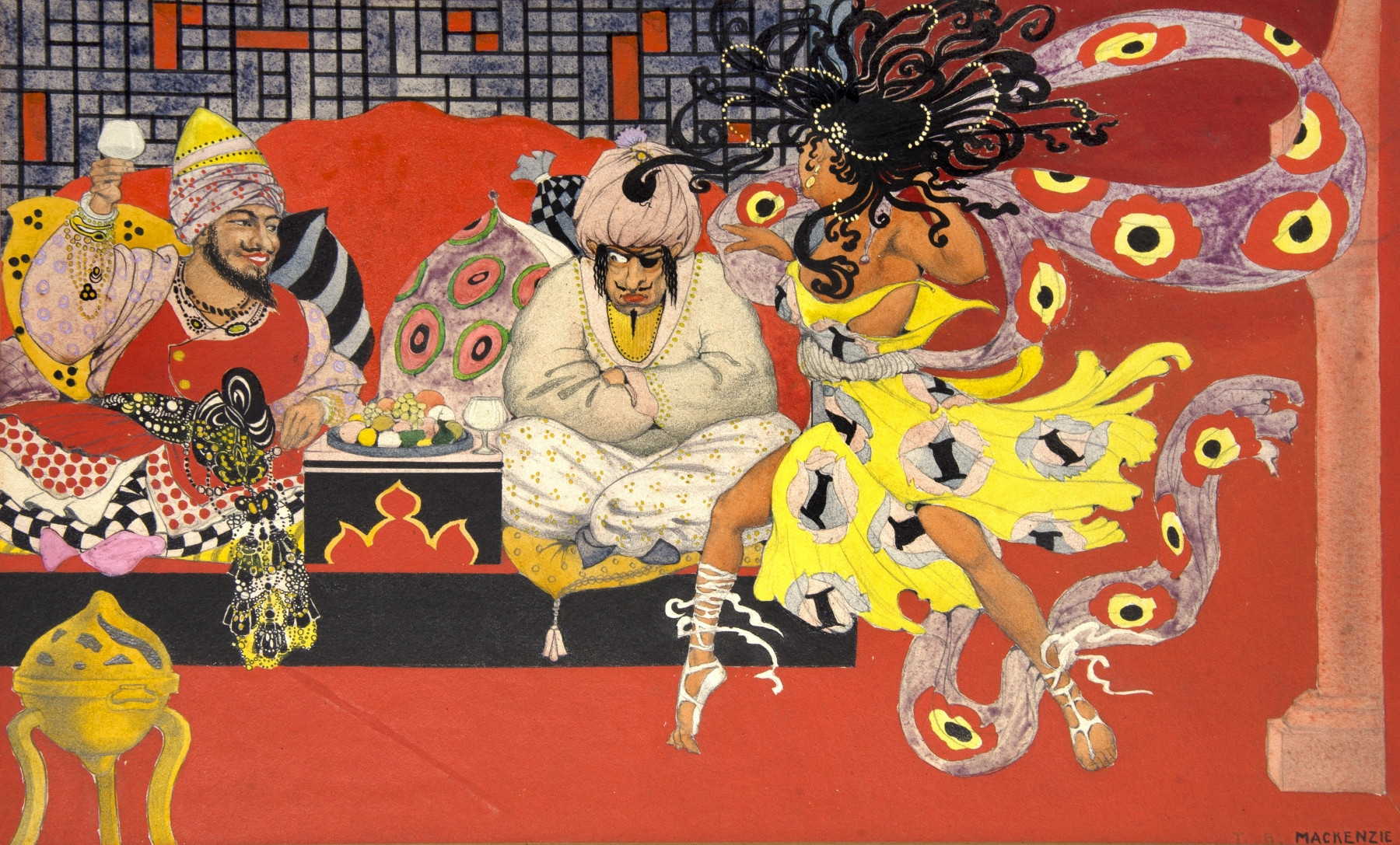
(click image to enlarge)
Scheherazade Dancing
Thomas Mackenzie was one of the most eclectic of gift book illustrators, who almost revelled in his absorption of influences. Here, in the figure of Scheherazade, he quotes most obviously from the work of Léon Bakst (1866-1924), the designer of sets and costumes most closely associated with Serge Diaghilev’s Ballets Russes.
The Ballets Russes was one of the most culturally significant phenomena of the early twentieth century, employing and influencing many of the greatest figures working internationally in the fields of literature, music and the visual arts, as well as of dance itself. The company made its British debut in 1911, during the celebrations for the coronation of George V, and returned to London regularly both before and after the First World War, until 1922.
Mackenzie is likely to have attended performances of the Ballets Russes and undoubtedly saw reproductions of Bakst’s costume designs. The company had created a ballet to the music of Rimsky-Korsakov’s symphonic suite Scheherazade, in 1910, but Mackenzie based his figure of Scheherazade on Bakst’s design for the costume of a Boetian youth, a character in the ballet, Narcisse. Narcisse was choreographed by Michel Fokine to a specially-written score by Nikolai Tcherepnin, and premiered in Monte Carlo in April 1911, with Vaslav Nijinsky in the title role. Narcisse was the first of three Greek-themed ballets designed by Bakst, who had been making a thorough study of ancient Greek costume since 1902, when he prepared designs for productions of Greek tragedies in St Petersburg. He rejected the monochromaticism of Neo-Classicism in favour of a brighter palette and more exotic patterning, which was both more archaeologically accurate and visually exciting. The design for the Boetian youth was among those included in the book, L’Art decoratif de Léon Bakst, which was published in Paris in 1913.